Brushes to Make Digital Art Look Like Oil Painting
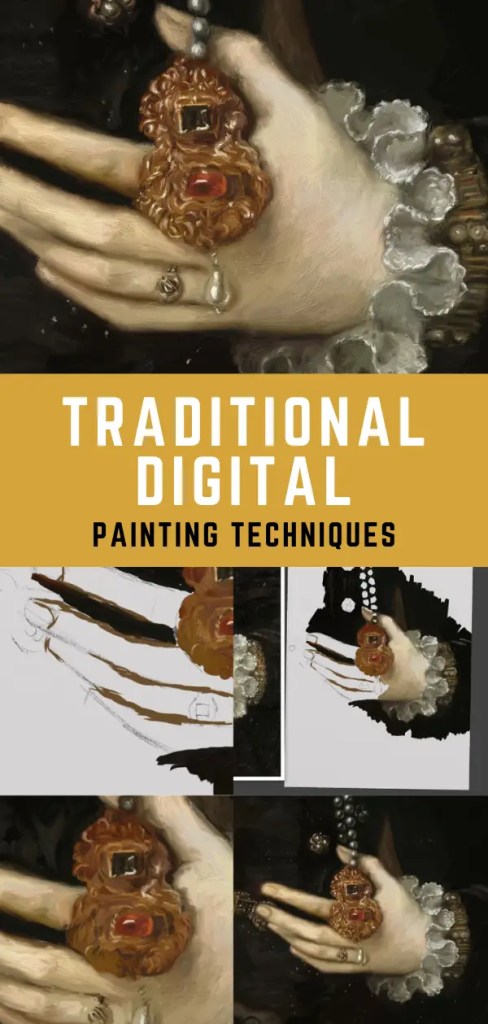
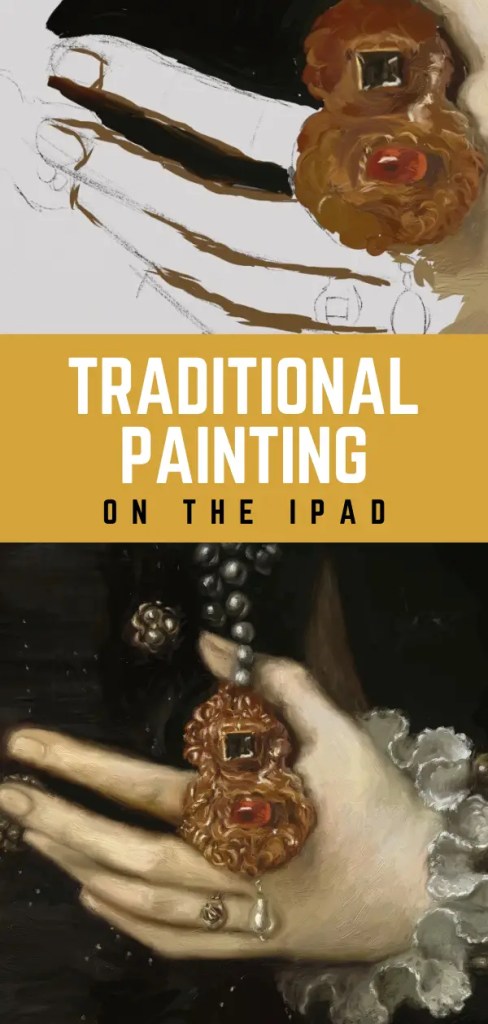
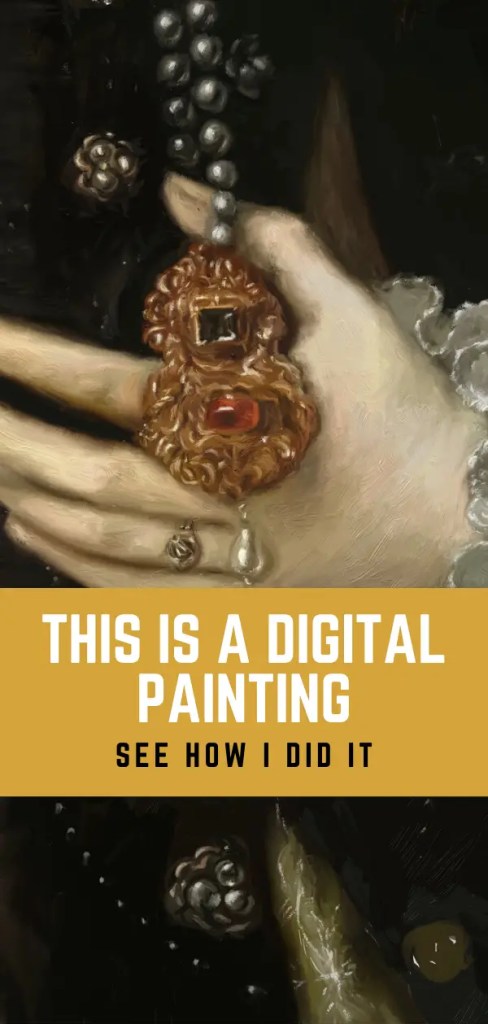
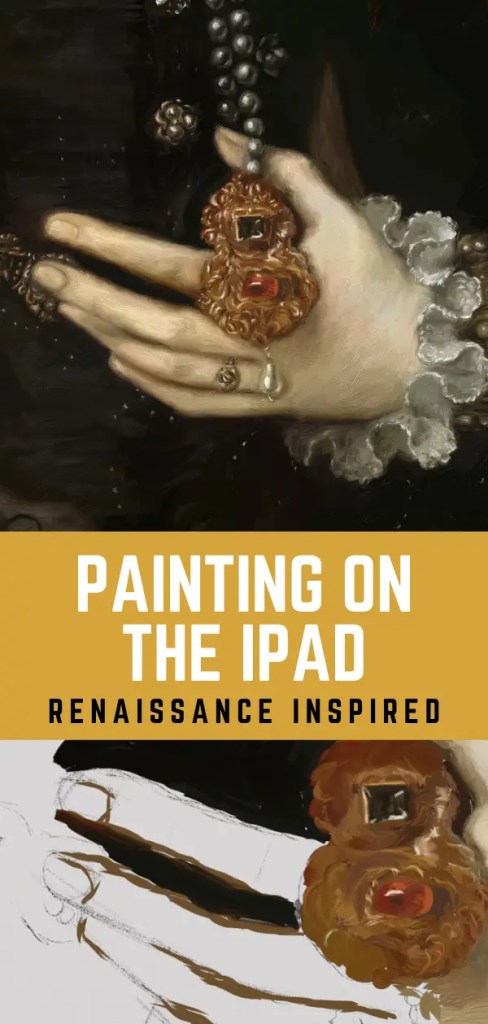
Ever since I picked upwardly an iPad and started painting, my number one goal was to make my digital painting await like a traditional oil painting. I wasn't convinced information technology was possible and, of class, I can still tell the difference. Nonetheless, a lot of people that view my work can't tell the deviation betwixt my digital and traditional paintings.
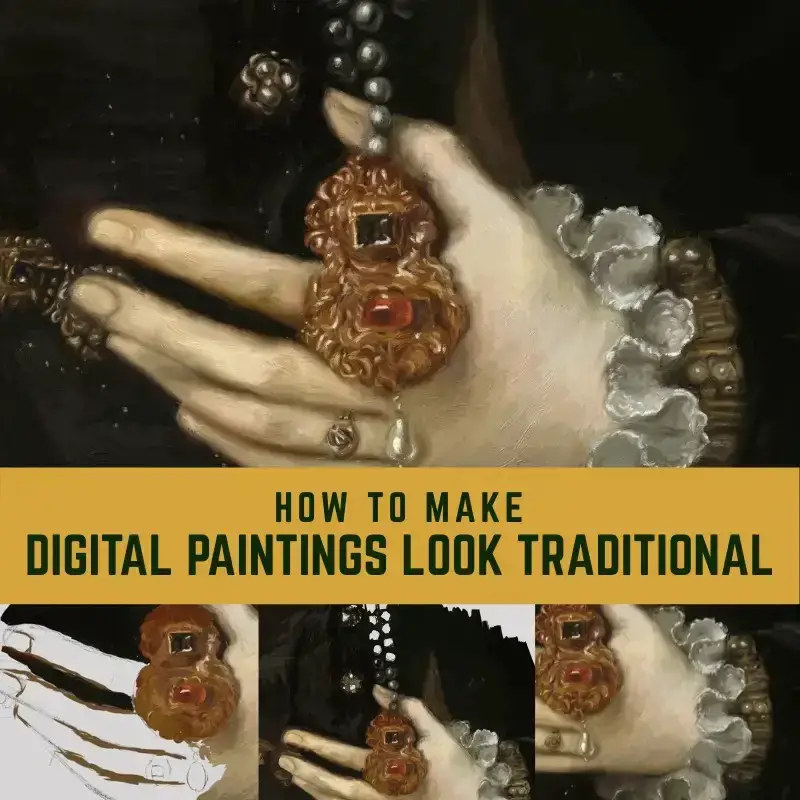
Yes, it is possible to make a digital painting look like a traditional oil painting. Use the aforementioned process that traditional painters and a program that gives a natural application of paint. This will give you a good result. Throughout the rest of this article, I will show yous a practice painting I did using ArtRage on my iPad Pro.
I am a long time traditional painter and resisted using digital methods until a couple of years agone. Now I run into it simply as another tool to help me exercise painting and drawing.
If you are not a digital painter, you lot volition nevertheless get something out of this article since I am using the same approach digitally that I use traditionally.
Using A Renaissance Painting For Inspiration
My reference image is a detail from "Portrait of a Lady" by Antonio Moro (1520-1578). I originally just wanted to practice painting the jewel in the middle of the image, just then started to get carried away. At that place were so many great elements to written report that I couldn't help myself. Hands are e'er a challenge to paint and so are pearls. The ruffle on the sleeve likewise captured my attention.
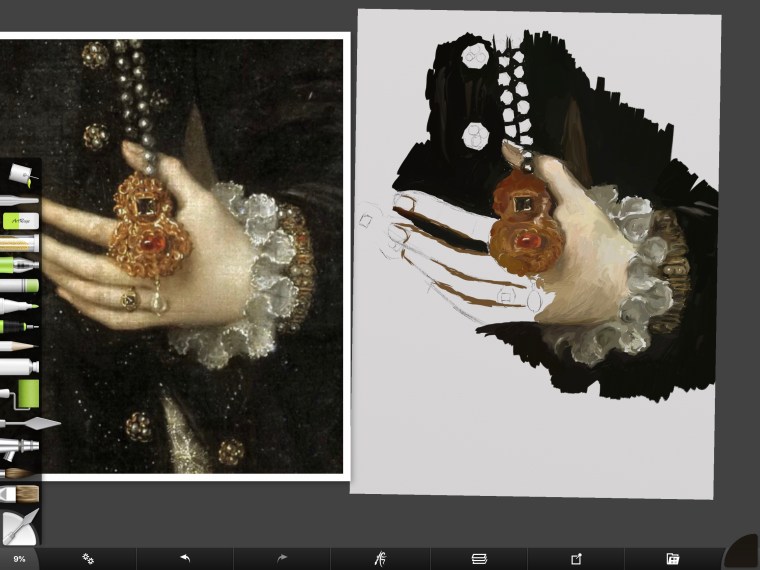
Since I didn't program on finishing this practice painting, I didn't take very many screenshots in-between stages, but I think I have enough to explicate my approach.
As I mentioned higher up, I used ArtRage on my iPad Pro to paint this. I've tried painting in Photoshop and Procreate earlier, merely could non get the painterly effect I was looking for. ArtRage has a much more than natural awarding of paint than any other plan I've used.
In the desktop version, yous take even more control over the brushstrokes and can make your own custom brushes. I didn't have that kind of control in the iPad app, merely I recollect I notwithstanding got a pretty skilful result. The iPad app is very inexpensive, so give information technology a try if you have an iPad that yous can use for painting.
The First Steps In The Digital Painting Study
As you lot can see beneath, I started out with a very rough pencil sketch. I wasn't trying to aim for perfection with the sketch. I'chiliad constantly adjusting the drawing equally I paint so there was no bespeak in getting likewise caught up in the sketch.
Use A Express Palette
I started painting the jewel in the middle since that was all I was going to paint initially. The original painting used a limited color palette, which is great for learning how to paint. If I had painted this traditionally, I would have definitely express myself to the Zorn palette.
The Zorn palette consists of Ivory black (which likewise serves as a blue), vermillion or cad ruby, yellow ochre, and white in oil pigment (for you traditional painters). Although the palette is limited, it can give you lot a surprisingly wide range of colors to work with.
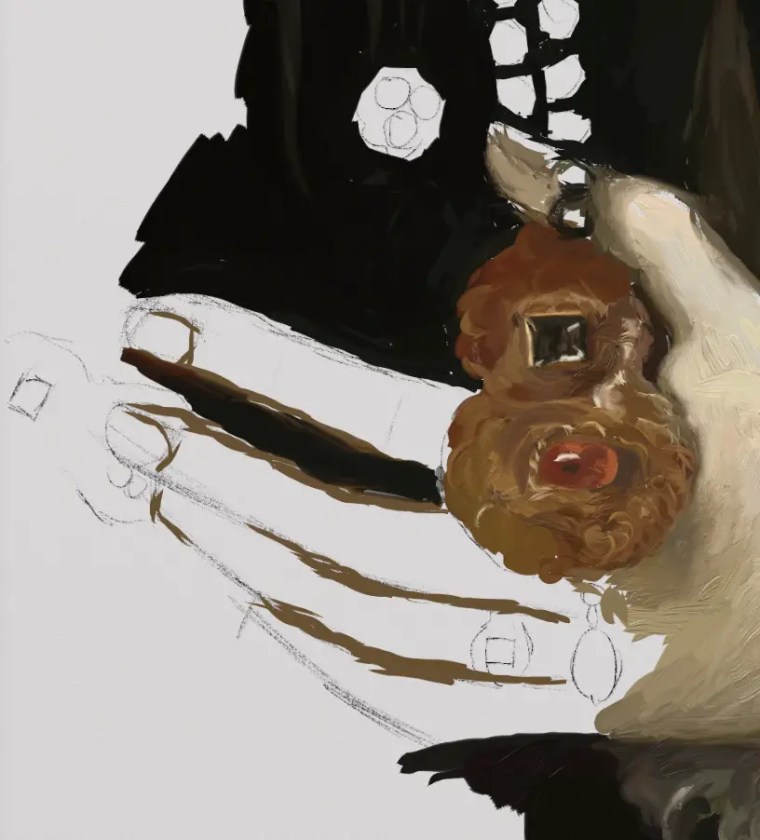
Roughing in masses of color
Using a limited palette is very beneficial when doing digital painting because it keeps the artist from having to brand too many decisions about color. In the digital world, there is an space number of colors and it tin be too tempting to use all of them.
Unremarkably, I will create swatches ahead of time and put them on the side of my painting. You can see an example of me doing that here. I didn't do that in this painting because I already knew the range of colors I was going to use.
Crude-In Color Quickly
As you can see in the image above, I wasn't being too careful when laying downwardly my paint. I typically use the oil paintbrush with the pressure at 85-90%, thinners at 13% or less, and loading at about 90%. The simply thing I vary is the size.
When getting started, I apply the biggest brush I tin can and go the canvas covered with paint as quickly as possible. I do this in my digital painting because it is exactly what I practice when I paint with real oil paint. I offset with large brushes at the showtime and work my way down to smaller brushes for the details.
This rough stage is known by well-nigh artists equally the ugly stage. It makes you wonder if yous should keep on painting or give up and do something more fun like get to the dentist. I would suggest staying with the painting. Eventually, things start to come together.
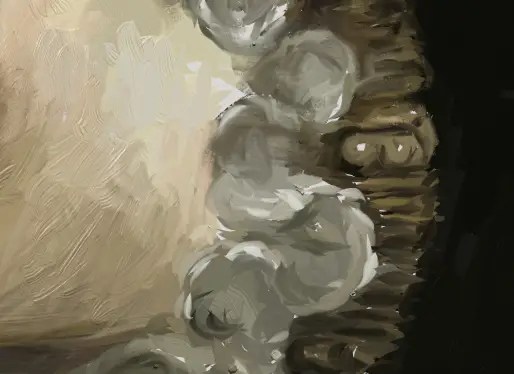
Wow – things look really ugly up close
Stay "Zoomed Out" For As Long As Possible
In the shut-upwardly to a higher place, y'all can see merely how ugly things really are. I try to keep the painting small for every bit long every bit possible while I'grand roughing in the colour. The reason is if I go on zooming in similar the image above, I'd constantly be trying to fix piffling details rather than looking at the overall picture show.
When you are in the weeds with details, you can be in danger of getting your overall proportions and values wrong. Below I'grand even so laying all the color down and everything looks pretty good. The values look right in comparison to the reference photograph and for the about part, the proportions are correct.
I can guarantee yous that the whole painting was a TOTAL mess like in the image in a higher place when I zoomed in closer.
If you would like to larn more about why values are then of import in painting, I recent wrote an article most it y'all tin notice hither.
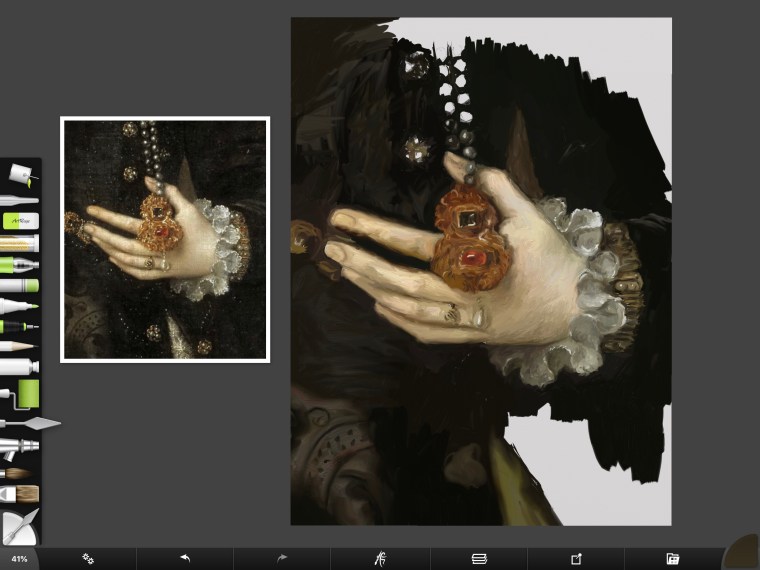
Go along Your Painting On The Nighttime Side
Ane of the reasons why Renaissance paintings are and then dramatic is because there is a lot of dark pigment on the canvas. This provides dissimilarity for the lightest color to appear very brilliant and concenter a lot of attending. If you start out with your values darker than your reference, you can always lighten them upwards and create a very dramatic result.
Well-nigh start artists call back things are lighter than they actually are and start with values too light. If you do this, yous could run out of a range of values to piece of work with and create a painting that is likewise flat looking. So e'er start dark and work your way to the light.
In that location are ever exceptions, merely as a dominion of thumb, this is the best process to use whether yous are doing digital painting or traditional.
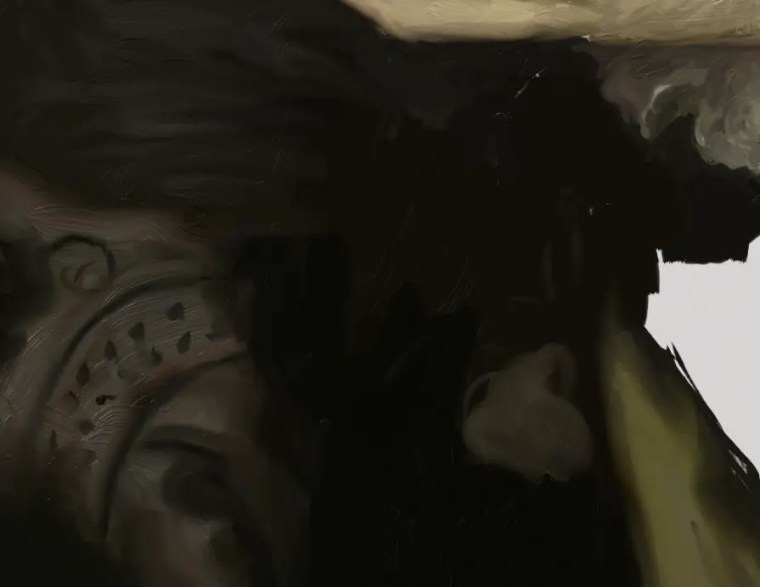
Tonal Diversity Adds Interest In Dark Areas
In the close-up higher up, yous tin see how subtle the tonal variations are. These variations added a lot of interest in the dark textile. The fun office about areas like this is that a few abstract brushstrokes may look like nothing upwards shut. Merely when you step back away from the painting, that office is full of texture and draws the viewer in.
I never did clean up this area very much since I didn't finish the painting, merely it nonetheless reads quite well from a distance.
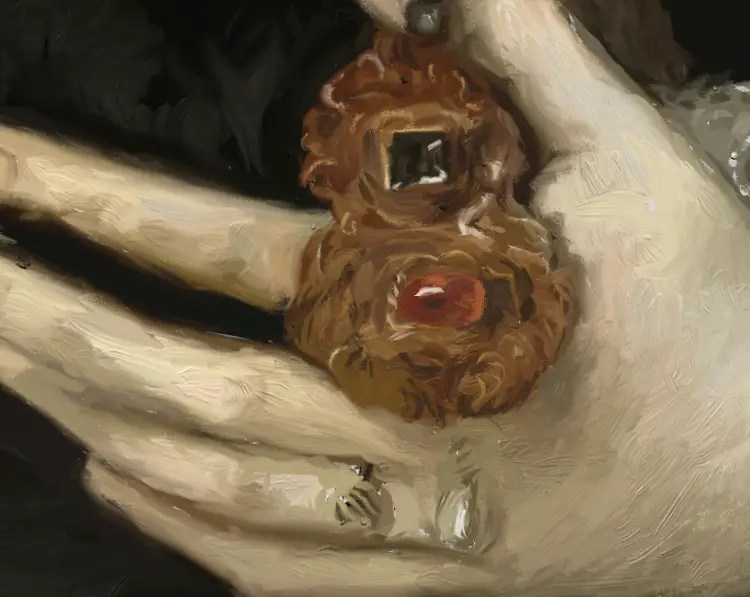
It looks and then scary up close, but squinting will assistance yous to see if you are on the right track
Squinting Is Your Friend
The close-up of the digital painting higher up is really scary. The marks look horrible and I was struggling with how to paint the intricate jewels. But one matter I realized was that the original painting was sort of a mess when you looked at it upwards close also. That jewelry is just a agglomeration of squiggles created past a brush.
This is where squinting while y'all paint, whether traditional or digital, helps yous to see if you are capturing the reference accurately.
Yous tin always become in and blend out your strokes, merely capturing the overall essence of the bailiwick before yous get to the little details is of import. Beneath you lot can see that the jewelry is starting to look like the reference. It however looks terrible up close though.
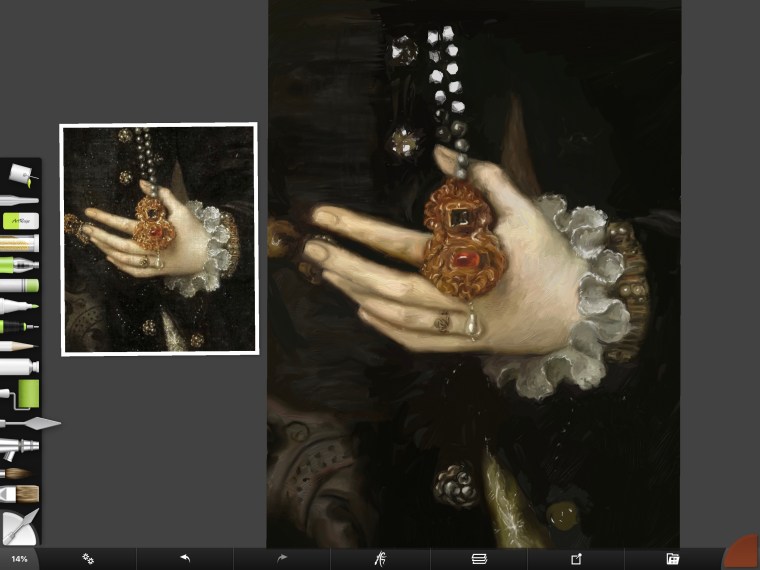
As nosotros zoom in below, yous tin can encounter how crude the pearls are at this stage. Pearls are really weird to pigment. They are similar painting a bunch of Christmas tree ornaments and are very reflective. I tried to paint the pearls equally just as possible. Overworking small details can steal some of the magic out of the painting.
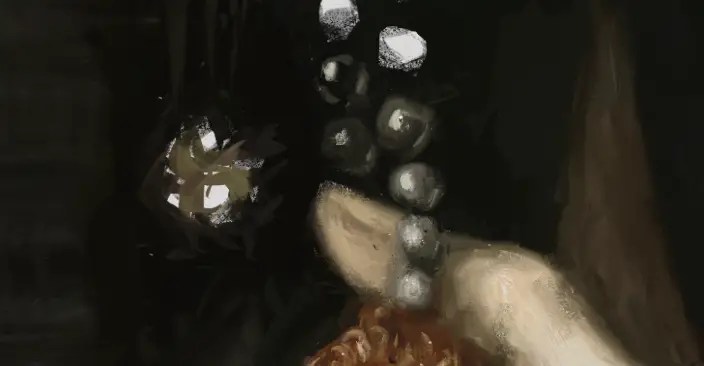
Details And Blending
As I got closer to the end of this report, my brushes got smaller and smaller. I also was blending out some of my brush strokes with the pocketknife tool. If I were painting this in oil, I wouldn't use a pocketknife to blend but would permit my brush strokes to blend into each other.
In ArtRage, the knife tool is set to "Just Blend Colour". There is no loading on the pocketknife and very little pressure if any at all. I started adding highlights to the ruffled gage and white pearl beneath.
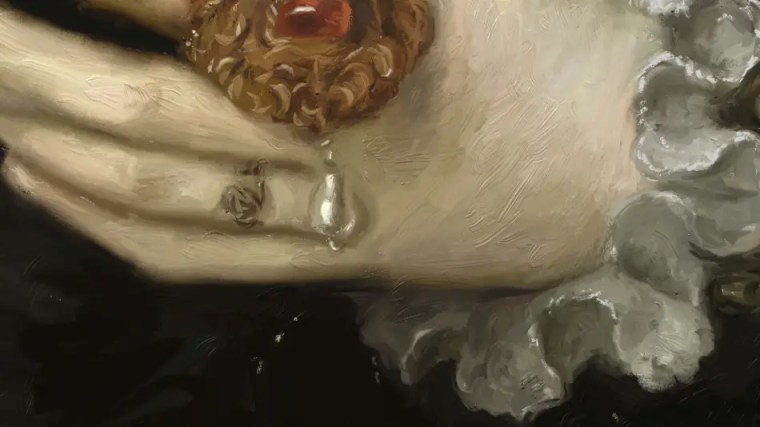
It looks similar for the item in the fabric to a higher place and below, I tried using a pastel brush since it looks a trivial chalky. This can be composite out with the pocketknife tool as well.
In traditional painting, I would never practise this as I'grand pretty sure pastel wouldn't mix well with oil. I would only apply a very small brush with a light value and probably a niggling linseed oil to help the paint menstruation. For vivid highlights like on the pearl above, I would load a small-scale brush with quite a bit of white pigment and dab in the calorie-free areas.
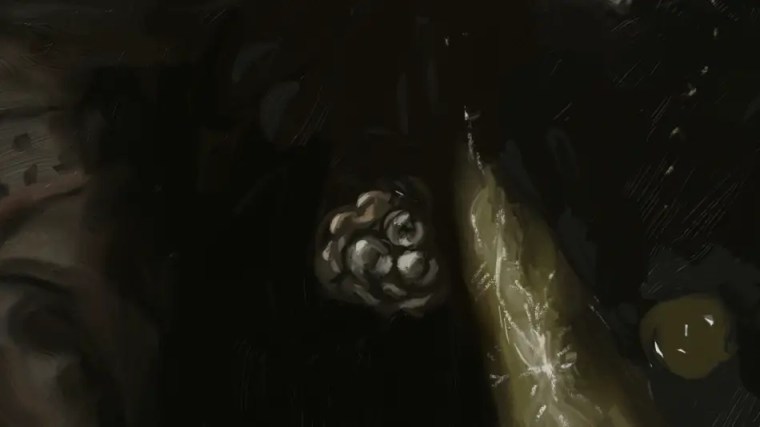
A Note On Layers
While many digital painters use a lot of layers during the painting process, I inappreciably ever practise. I like to keep things every bit elementary equally possible and close to my actual painting procedure. You can apply layers in oil painting, only you can't undo marks every bit you tin in digital painting. Y'all can just paint over things to alter them.
I find layers to exist very confusing when doing digital art so I but stay abroad from them. Every in one case in awhile I will add a layer and then I can become highlights added in the right place. For some reason, ArtRage likes to change the colour on the brush as soon equally I try to add my highlight. I don't know why it does this. I'g certain it'southward something I'm doing incorrect.
Checking Your Piece of work
Whenever possible with traditional oil painting, I like to employ the site-size method. This is where the reference and the painting are at the same size. What is overnice about this is that it is easy for your eye to go back and forth between the painting and the original to check for differences. I get into this in more detail in this tutorial.
Beneath y'all can see how things are coming along. I nevertheless have some highlights I can strengthen, but for the near part, the values are looking pretty good.
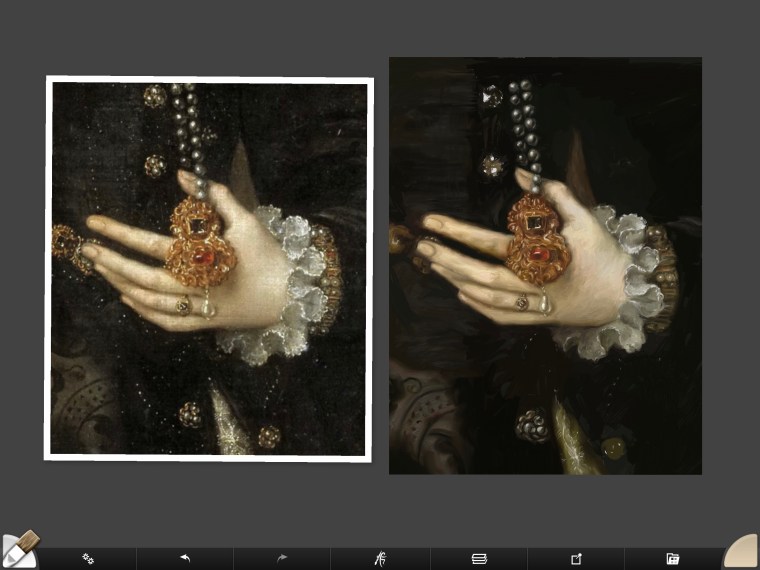
Below you can see where I zoomed into the jewel and cuff to add together more than highlights.

Information technology'due south starting to await better up shut, but the brush strokes are nonetheless abstract
The "Finished" Report
OK, so I never really finished this painting. For the most part, I use digital painting to assist me practice my art or do value studies for paintings I'm working on. I recently did a digital written report to assist me work out some tonal areas when I painted a dog with white fur in oil.
I didn't have to muddy up my sheet solving problems, waste paint or start a separate sail to practise the written report on. Many artists sell their color studies, so there is a skillful reason to do a physical report.
Plus, blending physical pigments is very different than blending digital pigments. Mixing paints is an art in itself and takes a lot of exercise, and then there is a lot of value in physical studies. However, digital paintings tin and do have a identify in the traditional artist's toolbox.
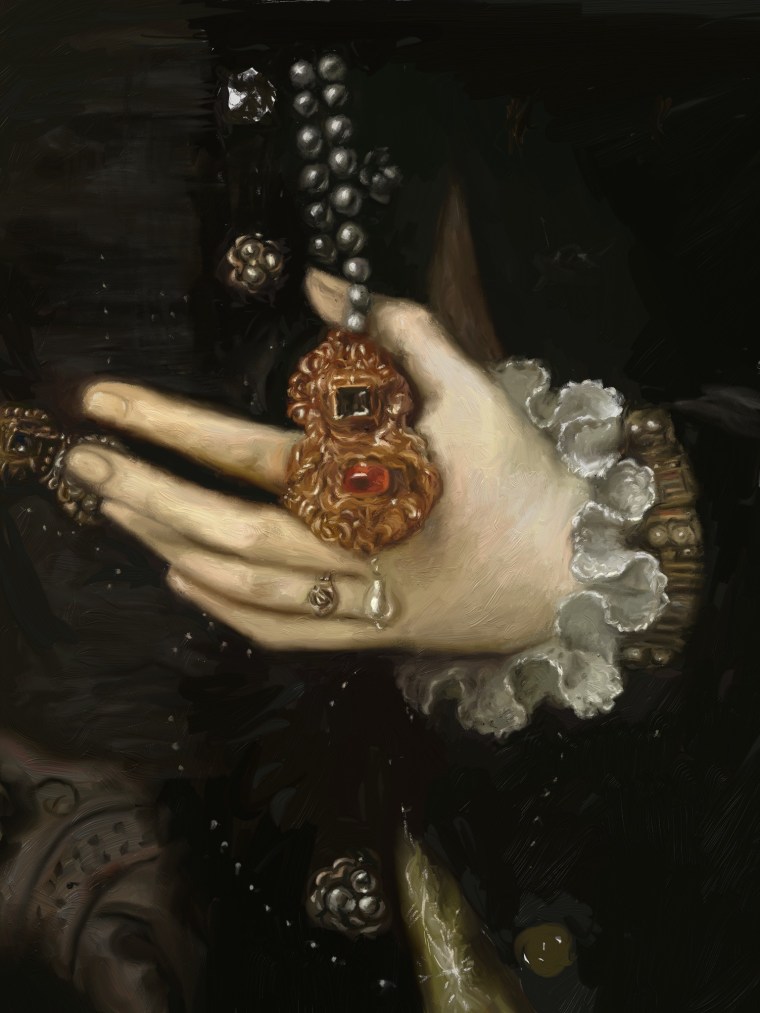
Summary For How To Go A Digital Painting To Look Traditional
Hither are a few things to go along in mind if y'all want your digital paintings to wait like traditional oil paintings:
- Utilize the aforementioned procedure that traditional painters use
- Utilise a limited color palette
- Crude-in colour quickly with as large a brush as possible
- Stay "zoomed out" for equally long as possible to help you lot see values
- Beginning dark and go to low-cal, not the other way around
- Squinting helps you to come across the values correctly
- Save details and blending to the end, using a smaller brush
- Paint all in one layer, just like you would on a sheet
Thank yous for stopping by!
If you lot enjoyed this article and are interested in more than posts like this, below are my other popular posts and painting tutorials. I'm also including my most popular oil painting video tutorial from my YouTube channel where y'all tin can watch me pigment a pug:
Why Paint Upside Down? 15 Helpful Painting Hacks
Painting A Cat In Oil Featuring Prescott, A Gorgeous Maine Coon
7 Portrait Painting Tips From The #30faces30days Claiming
Source: https://shelleyhannafineart.com/make-a-digital-painting-look-traditional/
0 Response to "Brushes to Make Digital Art Look Like Oil Painting"
Post a Comment